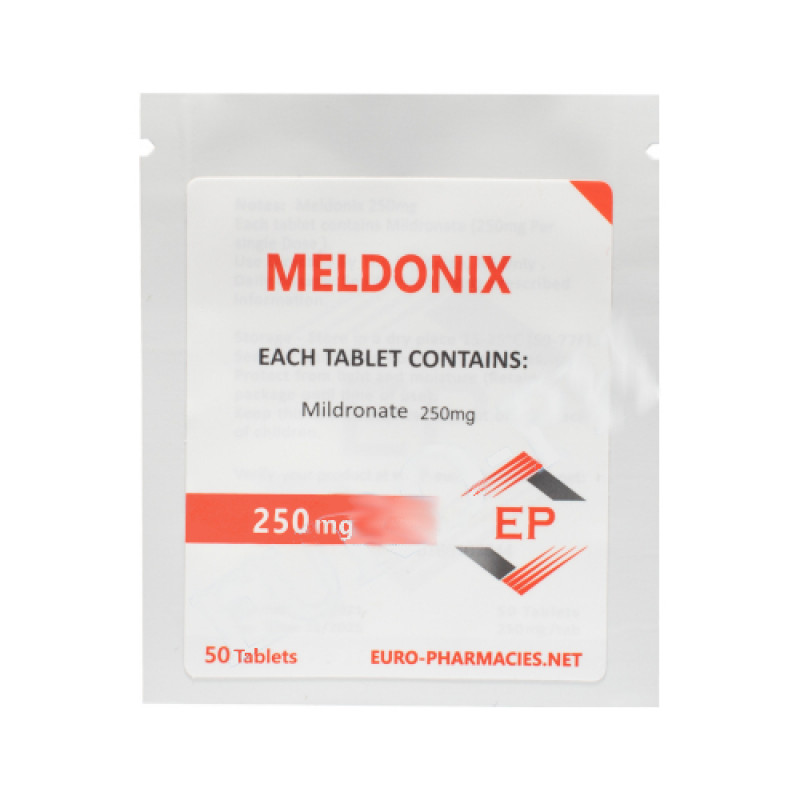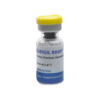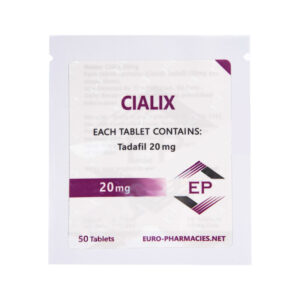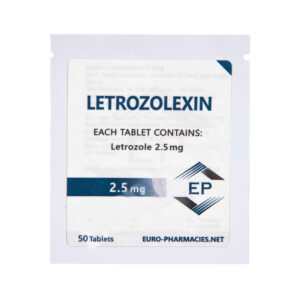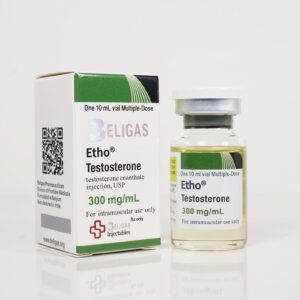Meldonix-int
£162.00
72,457 GBP/BTC
CoinGecko 23:20:48
ACTIVE HALF-LIFE 24 hours
TABLET COUNT: 50 COUNTS
CLASSIFICATION Fatty Acid Oxidation Inhibitor
DOSAGE 250-1000 mg/day
ACNE No
WATER RETENTION No
HBR Possible
HEPATOTOXICITY No
AROMATIZATION No
What is Meldonium?
Meldonium is used clinically to treat angina and myocardial infarction. The first clinical trial testing the efficacy of using a combination of meldonium and lisinopril, an angiotensin-converting enzyme inhibitor, to treat chronic heart failure, was reported in 2005, and concluded that the combination of meldonium and lisinopril may improve the quality of life, exercise capacity, and mechanisms of peripheral circulation of patients with chronic heart failure.
Uses
Treat Chronic Heart Failure and Cerebral Strokes
Abstinence Syndrome
Improves Oxygen Delivery to Cells
Protects Cells from Intoxication
Excellent for Sportsmen to Improve Stamina
Improves Energy Levels and Faster Physical Recovery
What should my health care professional know before I take this medicine?
Contraindications
Hypersensitivity to meldonium or any components of the drug. Increased intracranial pressure (in case of impaired venous drainage, intracranialtumours). Pregnancy and breast-feeding periods. Children’s age.
Patients with chronic liver and renal diseases should take care in case of long-term application of the drug. Due to possible development of stimulating effect it is recommended to take the drug before noon.
How should I take this medicine?
Applied internally.
• Intellectual and physical stress (including in athletes). Adults – 1 g per day divided into two 500mg doses. Course of treatment is 10-14 days. If necessary, the treatment is repeated in 2-3 weeks.
• Athletes should take 500 mg – 1 g twice a day before training. Duration of treatment during preparatory period is 2-3 weeks, during the period of
competition – 10-14 days.
• Cardiovascular disease. As part of combined therapy: 500 mg -1 g (2-4 tablets) per day, taking the whole dose at one time or dividing for 2 takings. Course of treatment is 4-6 weeks.
• Cardialgia against the background of dyshormonal myocardiodystrophy – 500 mg per day. Course of treatment is 12 days.
• Disturbed cerebral circulation. In course of treatment after elimination of acute disorders: 500 mg – 1 g per day, taking the whole dose at one time or dividing it for 2 takings. In case of chronic disorders: 500 mg per day. General course of treatment is 4-6 weeks. Recurrent courses (usually 2-3 times a year) may be taken after consulting a doctor.
• Diseases of peripheral arteries. 500 mg twice a day.
• Abstinence syndrome in case of chronic alcoholism. 500 mg 4 times a day. Course of treatment is 7-10 days.
• Maximum daily dose is 2000 mg.
Interaction with other drugs and other types of interaction
The drug may be combined with antianginal agents, anticoagulants and antiaggregants, antiarrhythmic drugs, diuretics, and bronchial spasmolytics. It intensifies the action of coronary vasodilating drugs, some hypotensive agents, and cardiac glycosides. Taking into consideration the possible development of mild tachycardia and arterial hypotension, care should be taken when combining the drug with nitroglycerin, nifediphine, alpha-adrenoceptor blockers, hypotensive agents and peripheral vasodilators.
Application during pregnancy and breast-feeding periods
Safety of Mildronate application during the pregnancy period has not been proved. In order to avoid possible negative effect of the drug on foetus, it should not be applied during pregnancy. It is unknown whether the drug penetrates into breast milk. If mother requires treatment with Mildronate, breast-feeding shall be stopped.
Storage:
Keep away from direct sunlight.
Keep locked and away from children.
Store in dry place at room temperature.
Do not exceed storage temperature higher than 25 C
What side effects may I notice when taking this medicine?
Rarely – allergic reactions (redness, rash, itching, oedema), as well as dyspepsia, tachycardia, excitement, changes of arterial pressure.

